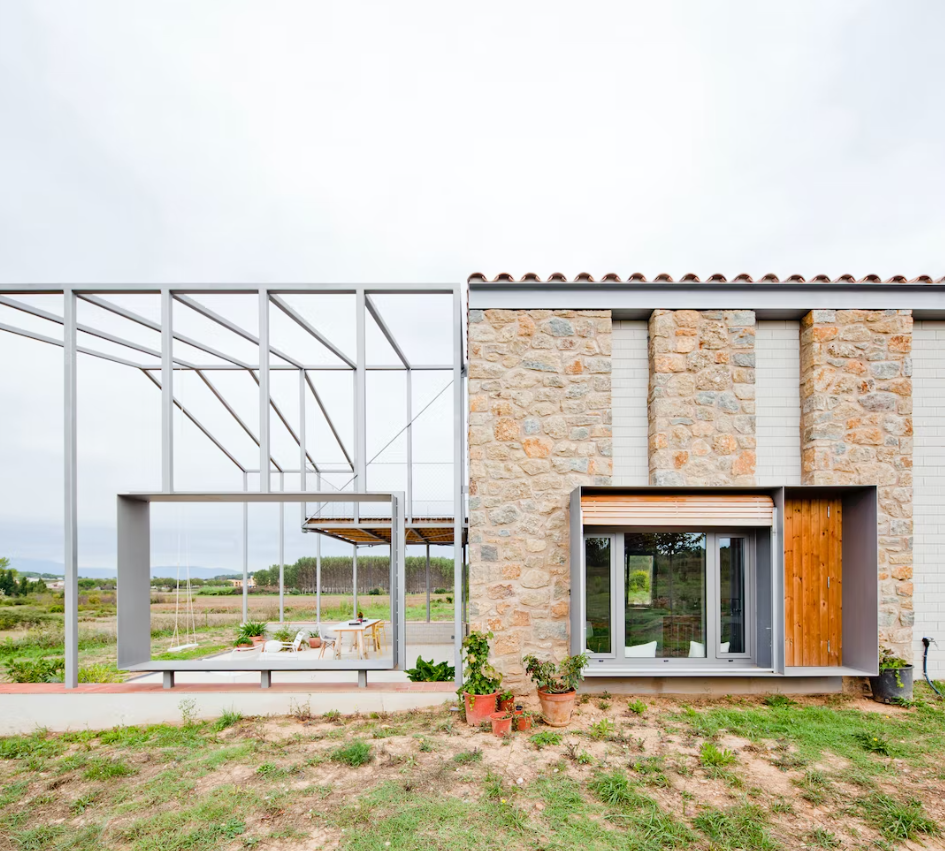When we think of seeing a building or work of art, I believe many of us would imagine a complete, fully-realized structure or piece. The aesthetic of the incomplete capitalizes on this inherent psychological reaction by intentionally leaving something looking incomplete, thus challenging conventional expectations. This aesthetic utilizes Gestalt psychology, founded in the 20th century, which states that humans will perceive things as complete rather than focusing on the incomplete gaps (1). Humans will have a tendency to restore the individual aspects to create a perception of a complete state because this sits better in their minds. When we perceive something as incomplete that we are used to seeing complete, it triggers a strong emotion and is also more memorable (1).
Designers started incorporating Gestalt principles in the 1920s (1). While this started a rise in intentional design of using incompleteness as an aesthetic, there has been a longer history of unfinished art that had been abandoned due to the artist’s death, lack of funding, or the loss of interest/inspiration (2). While not intentional, these works are still inspirations to the deliberate aesthetic overall and the origin of the aesthetic.

One example of this phenomenon of unintentional incompleteness is from Perino del Vaga, Holy Family with Saint John the Baptist, that was worked on from 1528-1537 (2). It was left unfinished but is still a very popular.

One example of how the incomplete aesthetic has been an inspiration in architecture for Anna & Eugeni Bach is with the above house with a seemingly unfinished patio space (3). This house in Spain combines conventional Catalan architecture on the right with an industrial incomplete style on the left (but still mirrors the overall house architecture) that seems to clash with each other and appears to be left unfinished. The purpose of this design choice was to use the incompletion to highlight the inner workings and architectural beginnings of the project (3).
An interesting application of this aesthetic can be found in logos/advertising. In the below figure, this Asian brand uses a geometric pattern that our brain naturally can picture complete, but then leaves certain sides of the cubes incomplete in a disordered fashion, exhibiting the aesthetic of incompletion (4). This creates a more memorable logo for the viewer, which has benefits in the corporate market.

Impactful artists/designers from this aesthetic include Kan Tai-keung from Hong Kong who combines intended blankness with traditional Chinese painting (4). Japanese graphic designer Ikko Tanaka highlights certain aspects of his subject by completely removing or masking other parts that you would traditionally see in a full graphic (4). Yuan Youmin outlines the famous “Mona Lisa” in the shape of a giraffe in a way that utilizes incompleteness to give the viewer a very different feeling about a well-known work of art as seen below (4).

This incomplete aesthetic has crossovers with the Wabi-sabi philosophy/aesthetic as it acknowledges two basic truths of the philosophy that nothing is perfect or finished and therefore, these two aesthetics can very easily inspire each other (5). It is also used in mixed-media and modern realism artwork and can inspire artists in these areas to combine with other aesthetics (5).

This piece by Daniel Segrove aims to combine realism and the aesthetic of incompleteness in a mixed media format (5).
(1) https://www.verywellmind.com/what-is-gestalt-psychology-2795808
(2) https://magazine.artland.com/unfinished-art-the-enduring-fascination-of-incompleteness/
(3) https://architizer.com/blog/inspiration/collections/aesthetic-of-the-incomplete/
(4) https://iopscience.iop.org/article/10.1088/1757-899X/573/1/012064/pdf
(5) https://realismtoday.com/imperfect-incomplete-and-impermanent/


4 Comments. Leave new
Another great example of unintentionally incomplete work is the Hearst Castle located in San Luis Obispo County, California. William Randolph Hearst was a very rich man who kept commissioning additions to make his castle even more grand. Complete with frescos imported from Italy, hand-carved wooden interiors, and over 115 different rooms, it’s quite the site to behold! Little did Hearst realize, his grand vision was so expensive it left him bankrupt, and the builders quit halfway through construction because they weren’t able to be paid. Now the castle serves as a tourist attraction and an icon of the inability to say “enough is enough” that comes with obscene wealth.
Thanks Perry for your comment! That is great insight on a different project I did not stumble upon in my research, so I looked up that castle. It is absolutely stunning even though unfinished. I think it is a great example of this aesthetic and also made me realize it’s connection to the minimalism aesthetic or another aesthetic such as that where wealth is kind of touted.
This is a very cool aesthetic that I was not familiar with until I read your post. It is interesting to look at the unintentionally incomplete work compared to the intentionally incomplete work as the artist has in mind a stopping point for the intentionally incomplete work, technically making it complete. The painting by Perino del Vaga is a very interesting painting because it gives us a glimpse into the artist mind and his process. It is raw in a way because Perino never had the chance to perfect it by painting over or changing parts of the work, compared to other intentionally incomplete works.
I would agree that the comparison between the two is very interesting. You can definitely tell that there is a bit more of a meaning and tie in with the finished parts with the intentional unfinished while the unintentional unfinished is very raw like you said and I think it is an interesting glimpse into the artist’s process. Thanks for your comment!